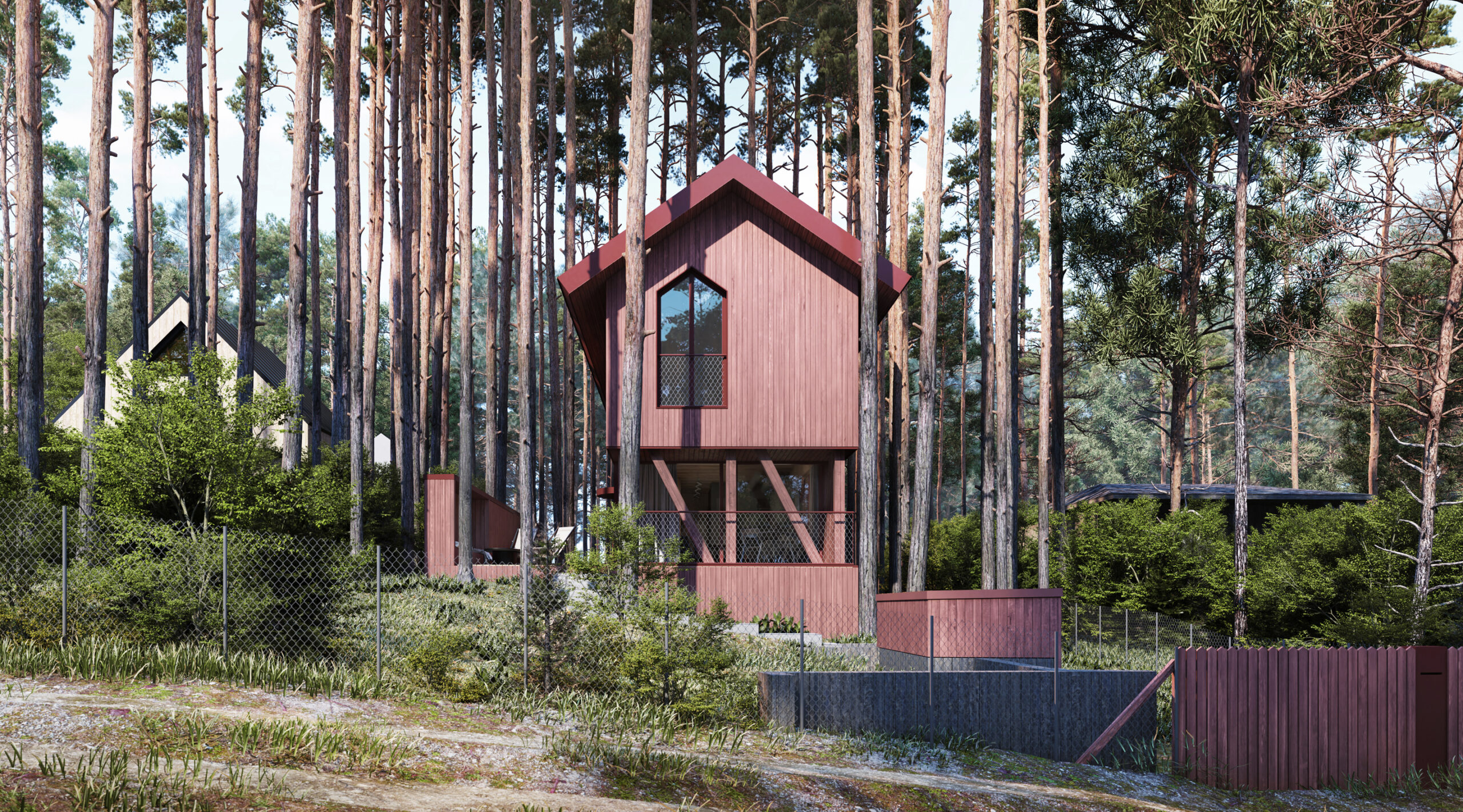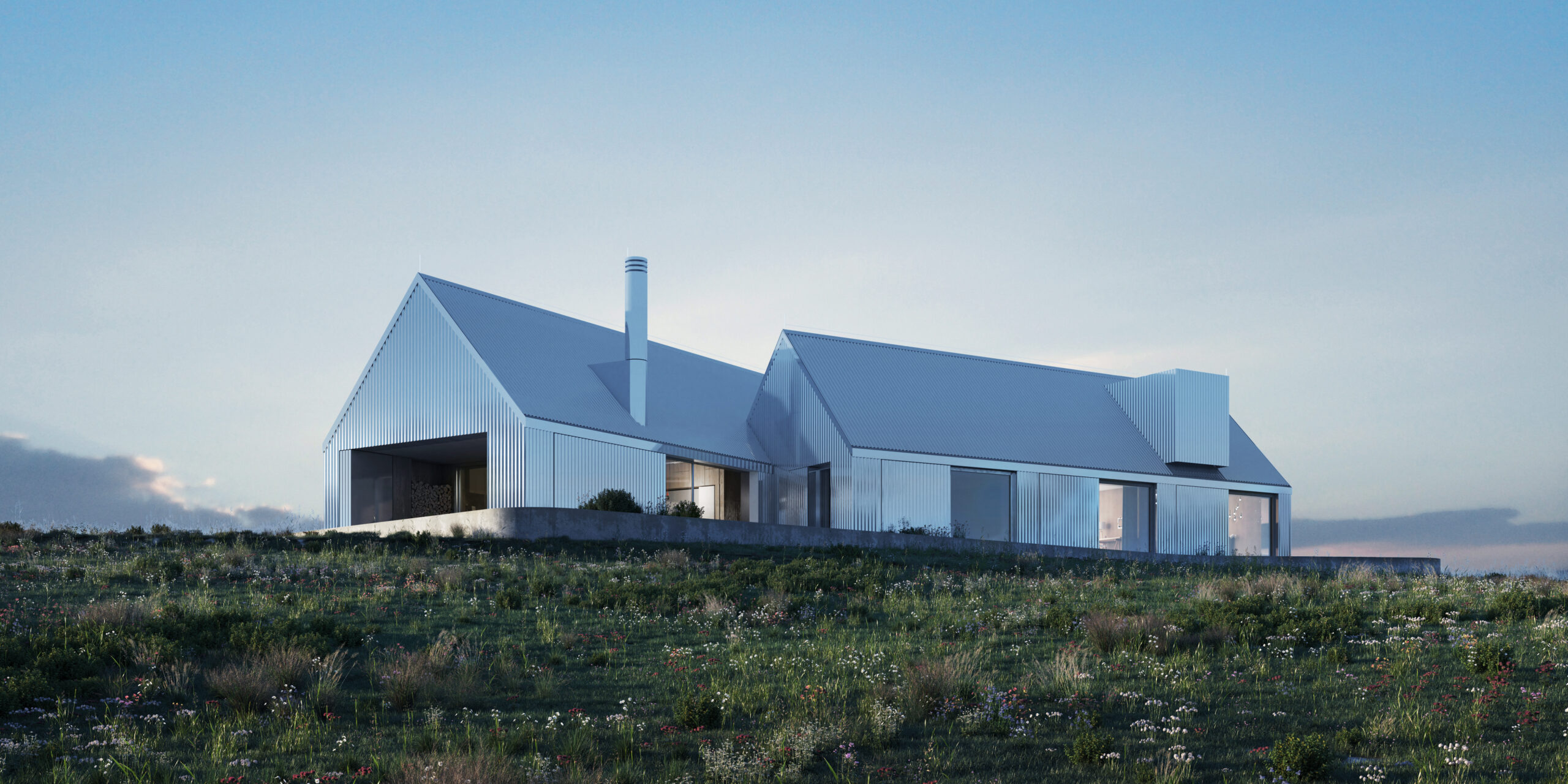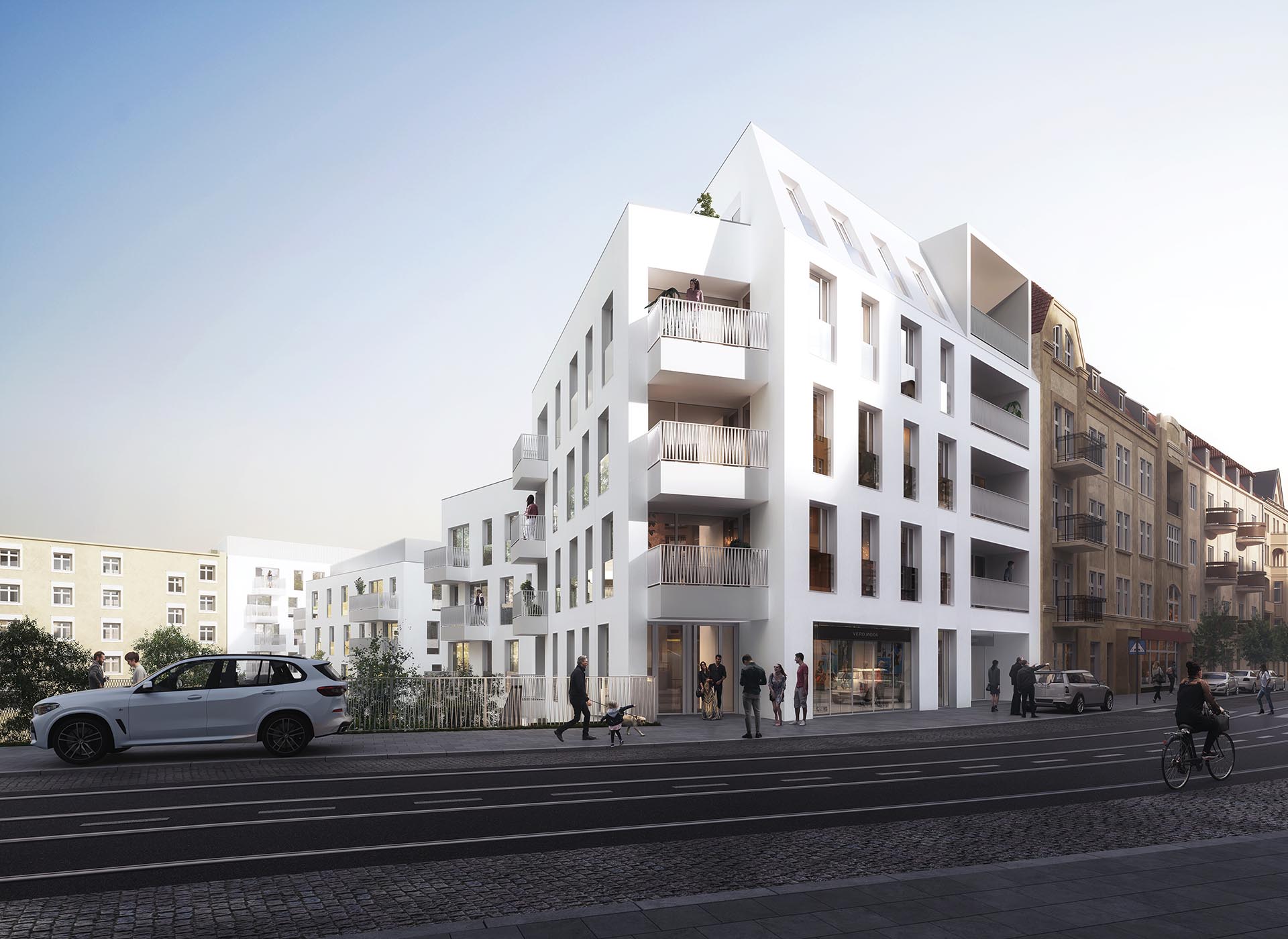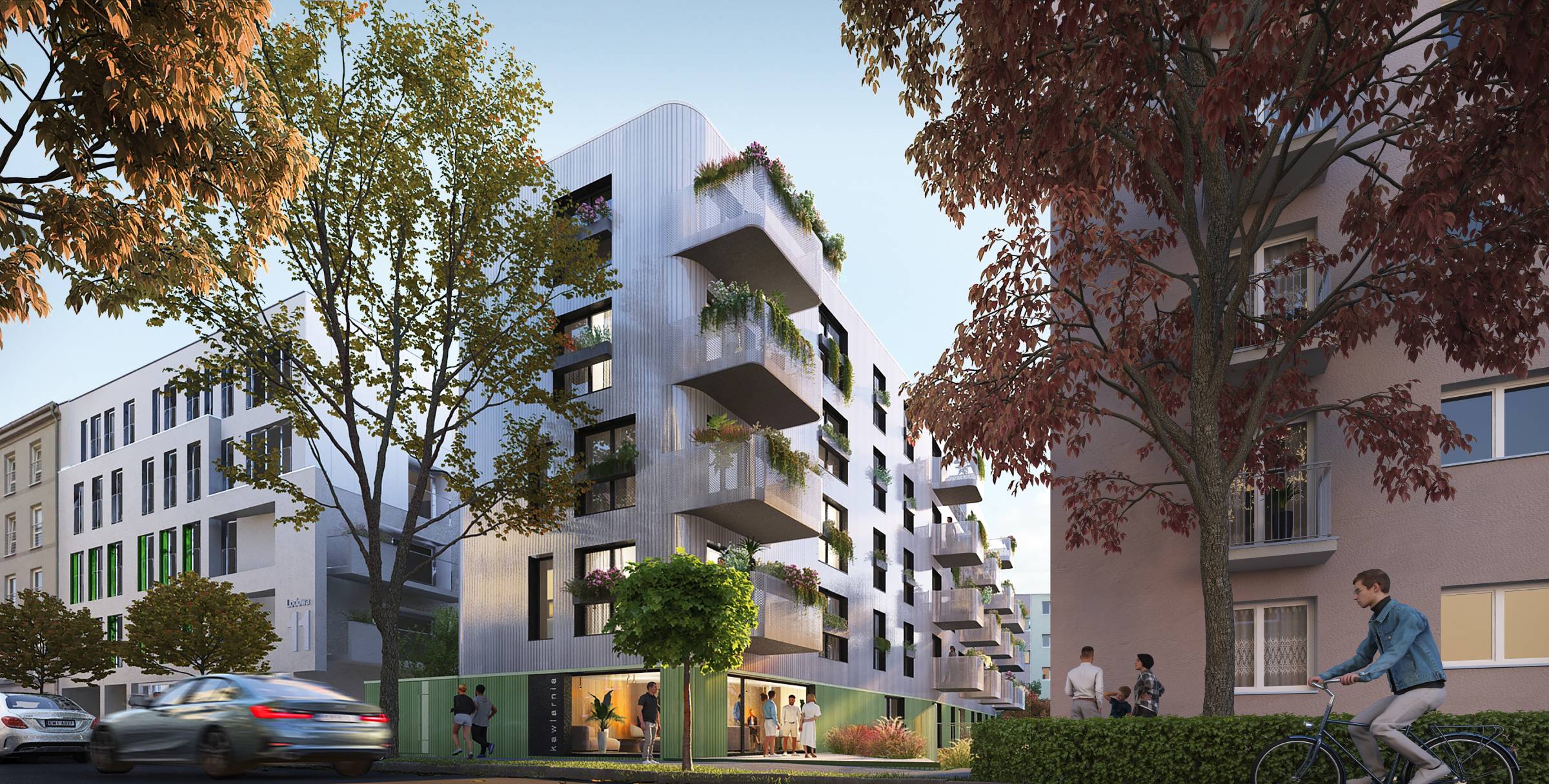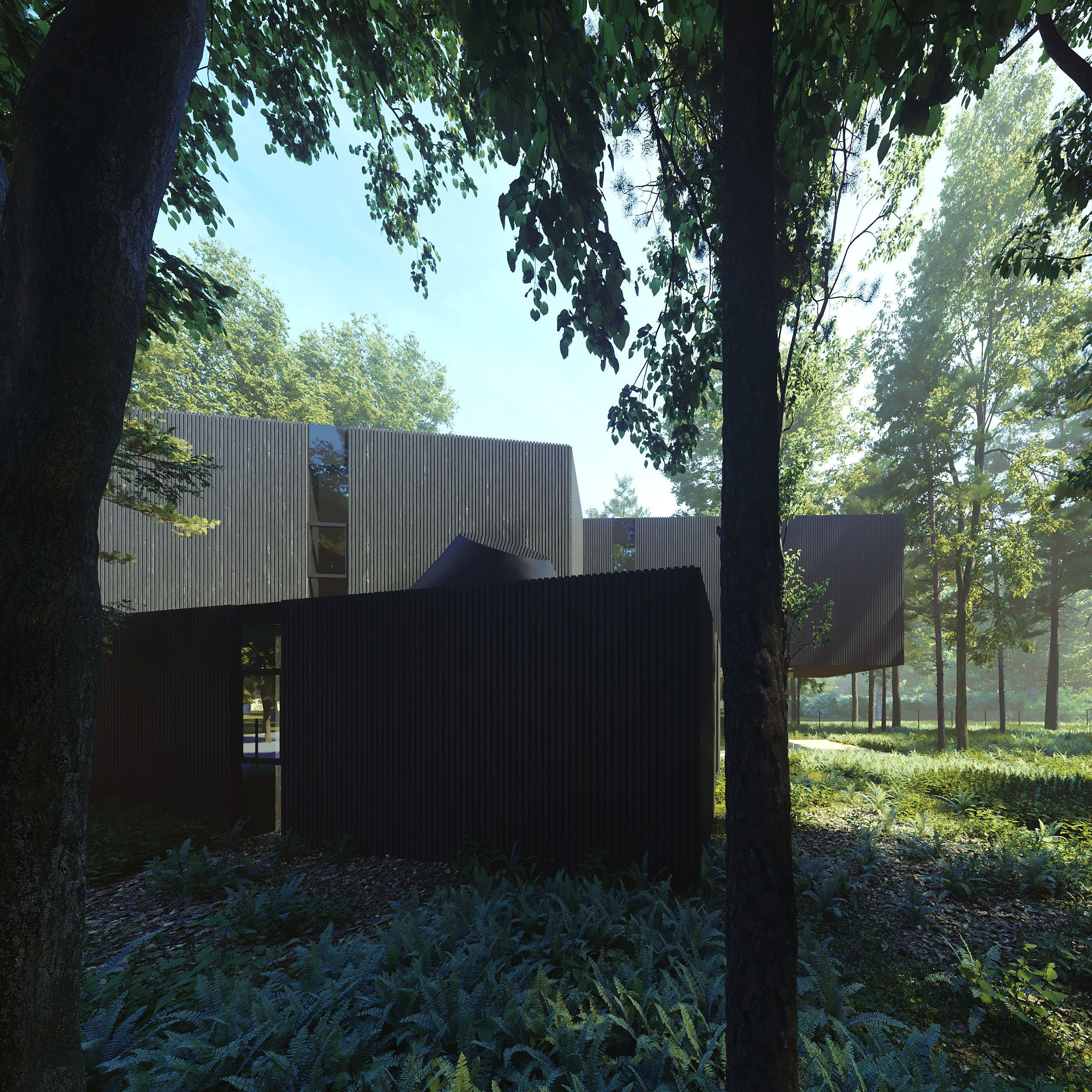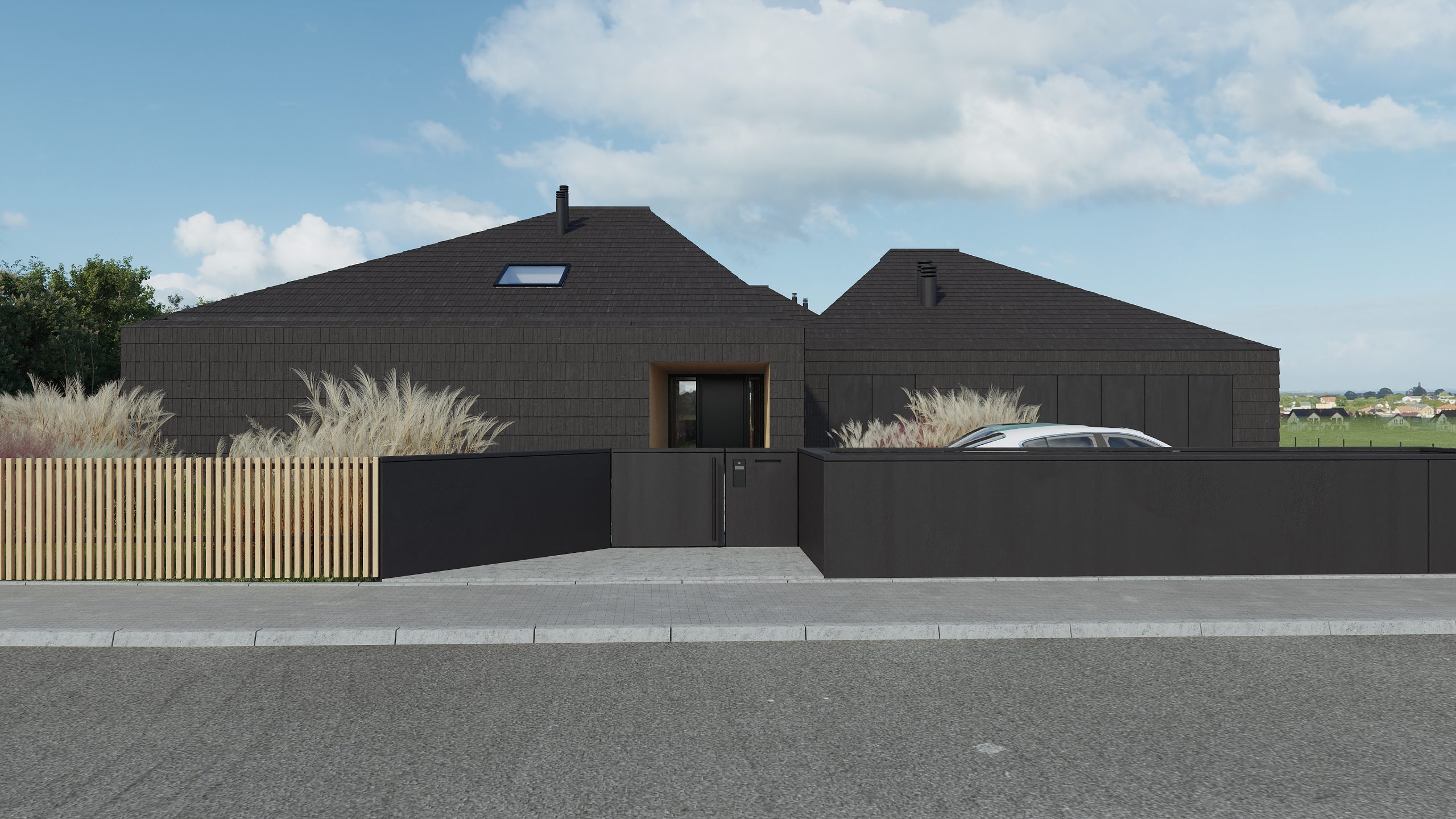Blocks
This is a project for the thermal modernisation of three buildings on the Bolesława Chrobrego estate in Poznań. The sixteen-storey blocks of flats were designed in the mid 1970s by a team of architects led by Professor Jerzy Buszkiewicz. The cuboid blocks with excellent proportions differ from each other, in fact, only in the colour of the balcony cladding.
In the design of the new colour scheme we referred to the original arrangement of colours on these buildings. The front and rear elevations are light, while the gables are darker. As a result, even on cloudy days, which are not rare in our climate, the blocks appear much lighter and more spacious. Intensive colours only appear on the new balcony covers. The balconies of building 25 are therefore blue, 26 are green and 27 are red.


Mosaic
The blocks of flats in the Chrobry estate had another very characteristic element. The prefabricated elements from which they were made used small ceramic tiles as cladding. Unfortunately, because the costs were too high, we were unable to save this mosaic. But it did inspire us and we decided to include a memory of it in the new design.
The first element bearing its trace is a fount designed especially for the modernised buildings. This font was created in cooperation with the "Zupagrafika" studio run by David Navarro, a Spaniard who works and lives in Poznan. We have long known that David, like us, has a great respect for Polish post-war modernism and we sensed that the result of this collaboration could be interesting.


Balconies
The mosaic motif also appears in the design of the new balcony railings. The old enclosures were in such poor condition that they had to be completely replaced. The design of the new ones is based on the original structure, except that we cover the balconies in their entirety, both on the front and the sides. This solution is intended to bring order to the chaos that is often created on the facades of buildings by balconies that are freely arranged by residents. The multicoloured pots they use will be covered up, and only the flowers will be visible from outside. For reasons of cost, the balcony enclosures will be made of minerite slabs. As these slabs are slightly larger than the dimensions of the balconies, a certain amount of waste will be generated when they are processed. Instead of throwing them away, we will use them to create a graphic decoration for the balustrades. In this way, the faces of the balconies, as well as the 'mosaic' font, will evoke a memory of the original façade detail.




Drawing
In creating the graphic layout of the mosaic on the balcony fronts, we decided to involve the residents of the buildings as well.
In this case, the model for us was one of the most interesting Polish painters of the late 20th century - Ryszard Winiarski. Our mosaic on the balconies is deceptively similar to his work from the 1970s, but we were inspired not by the paintings themselves, but by the way they were created. Winiarski combined the world of art with science. He used theories of chance and games or statistics to paint pictures. For example, he would divide a white primed canvas into equal fields, and then, throwing dice, he would fill them with paint. If the number drawn was even - black, and if it was odd - he left the field empty. This is the method we proposed to the residents. A few months before the renovation of the first building started, we met with the residents who, using the dice, "threw" themselves the mosaic pattern that would be placed on the balconies of their blocks.



